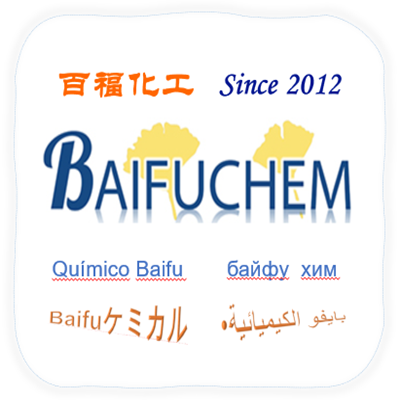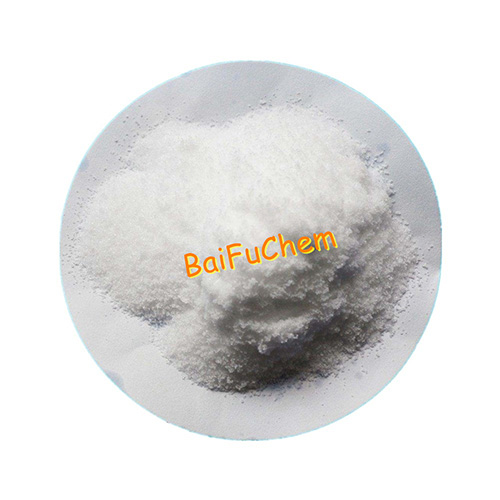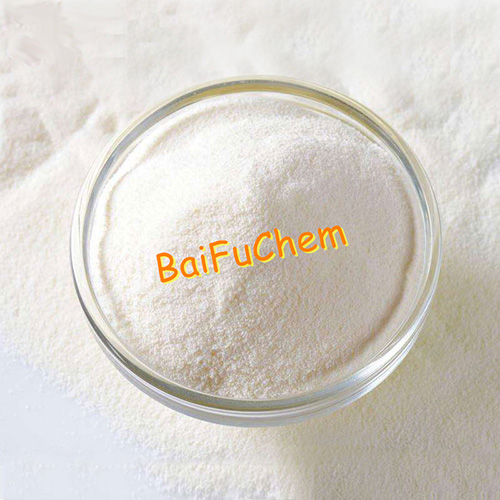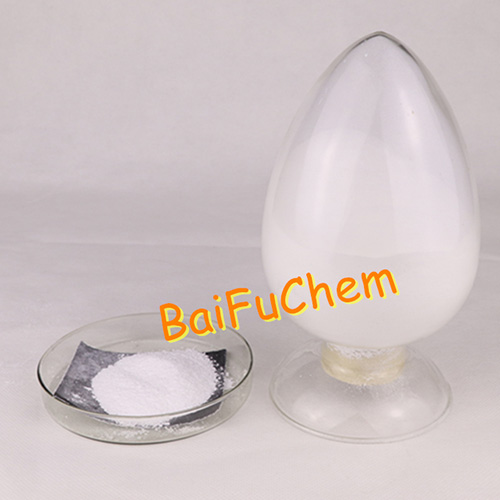Project Description

Description
-
Brand:乐动体育最新版本
-
Product Name:Papain
-
Synonyms:Papain Coarse-enzyme;Papain;Velardon;Vermizym;Papain,
for biochemistry;papain from carica papaya;papain from papaya latex;PAPAIN,POWDER,PURIFIED
-
CAS No.:9001-73-4
-
MF:C9H14N4O3
-
MW:226.23246
-
Packaging:25 kg/ fiber drum,or according to the requirements of the customers
Application
1.Papain may cause allergic manifestation .Person handling this material should be protected against inhalation of dust and contact with the skin or eyes.
2.For tenderizing meats; for clearing beverages; for bating skins.
3.papain is a papaya enzyme able to dissolve keratin. Papain is used in face masks and peeling lotions as a very gentle exfoliant. It can be irritating to the skin but less so than bromelin, a similar enzyme found in pineapples and also used in cosmetics. It is considered a non-comedogenic raw material.
4.Papain is a tenderizer that is a protein-digesting enzyme obtained from the papaya fruit. the enzyme, used in a patented process, is injected into the circulatory system of the live animal and is activated by the heat of cooking to break down the protein, thus tenderizing the beef. the enzyme is inactivated by stomach acids.
Papain Usage And Synthesis
| Definition | 木瓜蛋白酶:口服enzymeoccurringfruit of the West Indianpapaya tree (Carica papaya). It isused as a digestant and in themanufactureofmeat tenderizers. |
| Manufacturing Process | Crude papain, obtained as the dried exudate of the fruit and leaves of Carica papaya L., Caricaceae, is usually found to have been contaminated during collection, drying, or storage by insects, rodent hair and excreta, botanical plant parts, sand, etc. and may thereby become further contaminated by harmful bacteria and enteric organisms. |
| 迄今为止木瓜蛋白酶被分散提纯the crude enzymes in water, filtering and spray-drying. In this procedure, however, the soluble contaminants are retained in the dried product. It has also been known to purify papain by dispersing it in water and adding acetone to reprecipitate the enzymes leaving many of the acetone-soluble and water-soluble impurities in the supernatant liquid. The material thus purified possesses a very disagreeable sulfidelike taste probably due to the reaction between the acetone and reactive sulfhydryl groups present in the papaya latex. | |
| It has now been found that an enzyme mixture of high purity which contains none of the objectionable sulfidelike taste can be obtained by dispersing the crude enzymes in water, adding a quantity of a water-miscible lower-alkanol to the incipient precipitation point of the proteolytic enzymes thereby retaining the maximum proteolytic activity (i.e., the maximum amount of the proteolytic enzymes) in the solvent phase while precipitating the major portion of the lower-alkanol insoluble contaminants, removing the loweralkanol insoluble contaminants and precipitated inert materials, for example, by filtration or centrifugation, and then adding an additional quantity of the water-miscible lower-alkanol sufficient to precipitate the proteolytic enzymes. | |
| The following is a specific example of the conduct of the present process. 100 g of crude papain were stirred with 120 ml of 0.01 M cysteine hydrochloride for one hour during which time the papain was completely dispersed. To the dispersion was added slowly and with vigorous stirring 147 ml of methanol. The mixture, which contained 55% methanol by volume, was stirred for about thirty minutes and centrifuged and the clear supernatant liquid was removed and saved. The precipitate was washed with 50 ml of 55% aqueous methanol, and the mixture was centrifuged again. The precipitate containing the undesirable, insoluble contaminants was discarded, and the clear wash liquid was combined with the main supernatant. To the combined clear supernatant liquid was added slowly and with vigorous stirring 265 ml of methanol to give a mixture containing 75.5% methanol by volume. The enzymes were precipitated as a taffylike gum which was isolated by decantation of the supernatant liquid containing the undesirable, soluble contaminants and traydrying. Alternatively, the precipitated enzymes can be redissolved in pure water and spray-dried | |
| Brand name | Caroid (Sterling Winthrop). |
| Therapeutic Function | Enzyme, Wound adhesion inhibitor |
| General Description | Papain (Papase), the dried and purifiedlatex of the fruit of Carica papaya L. (Caricaceae), can digestprotein in either acidic or alkaline media; it is best at a pH between4 and 7 and at 65°C to 90°C. It occurs as light brownishgray to weakly reddish brown granules, or as a yellowishgray to weakly yellow powder. It has a characteristic odor andtaste and is incompletely soluble in water to form an opalescentsolution. The commercial material is prepared by evaporatingthe juice, but the pure enzyme has also been preparedand crystallized. In medicine, it has been used locally in variousconditions similar to those for which pepsin is used. Ithas the advantage of activity over a wider range of conditions,but it is often much less reliable. Intraperitoneal instillation ofa weak solution has been recommended to counteract a tendencyto develop adhesions after abdominal surgery, and severalenthusiastic reports have been made about its value underthese conditions. Papain has been reported to cause allergiesin persons who handle it, especially those who are exposed toinhalation of the powder. |
| Safety Profile | Poison by intraperitoneal route. Human systemic effects by ingestion: changes in structure or function of esophagus. Experimental teratogenic and reproductive effects. An allergen. When heated to decomposition it emits toxic fumes of NOx. |
| Purification Methods | A suspension of 50g of papain (freshly ground in a mortar) in 200mL of cold water is stirred at 4o for 4hours, then filtered through a Whatman No 1 filter paper. The clear yellow filtrate is cooled in an ice-bath while a rapid stream of H2S is passed through it for 3hours, and the suspension is centrifuged at 2000rpm for 20minutes. Sufficient cold MeOH is added slowly with stirring to the supernatant to give a final MeOH concentration of 70 vol%. The precipitate, collected by centrifugation for 20minutes at 2000rpm, is then dissolved in 200mL of cold water, the solution is saturated with H2S, centrifuged, and the enzyme is again precipitated with MeOH. The process is repeated four times. [Bennett & Niemann J Am Chem Soc 72 1798 1950.] Papain has also been purified by affinity chromatography on a column of GlyGlyTyrArg-agarose [Stewart et al. J Am Chem Soc 109 3480 1986]. |
Specification
| Items | Specification |
| Fp | 29 °C |
| storage temp. | 2-8°C |
| solubility | H2O: soluble1.2mg/mL |
| form | lyophilized powder |
| color | almost white |
| Water Solubility | Soluble in water, insoluble in most organic solvents. |
| Merck | 7016 |
| EPA Substance Registry System | Papain (9001-73-4) |
Safety Information
| Hazard Codes | Xn |
| Risk Statements | 42/43-42-36/37/38-20/21/22-10 |
| Safety Statements | 36-36/37-26-24-22-45-23-36/37/39 |
| WGK Germany | 3 |
| RTECS | RU4950000 |
| TSCA | Yes |
| HS Code | 35079090 |
| Toxicity | TDLo orl-man: 71 mg/kg:GIT JCGADC 9,127,87 |
Papain Preparation Products And Raw materials
| Raw materials | Celite–>L-Cysteine–>RUBBER LATEX–>Methanol–>PAPAYA FRUIT |
乐动体育最新版本
Our Vision: Become the world’s first class chemical material supplier!
乐动体育最新版本is a professional chemicals supplier.If you are interested in our products or want to purchase from China, please send E-mail to sales@baifuchem.com.
//www.zengyuanhua.com/product/13-dioxolane-24-dione-5-methyl-s-5997-42-2-direct-manufacturer/
Product Storage
Keep undercool, dry and well ventilated warehouses, guard against fire.




-CAS-5625-37-6-01.jpg)
